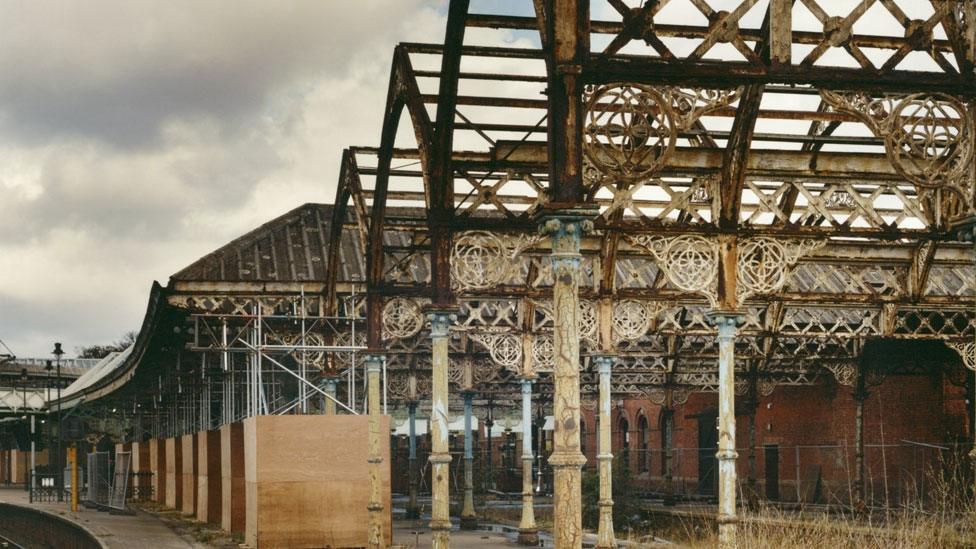Victorian Society: What happened to previous at risk sites?
- Published
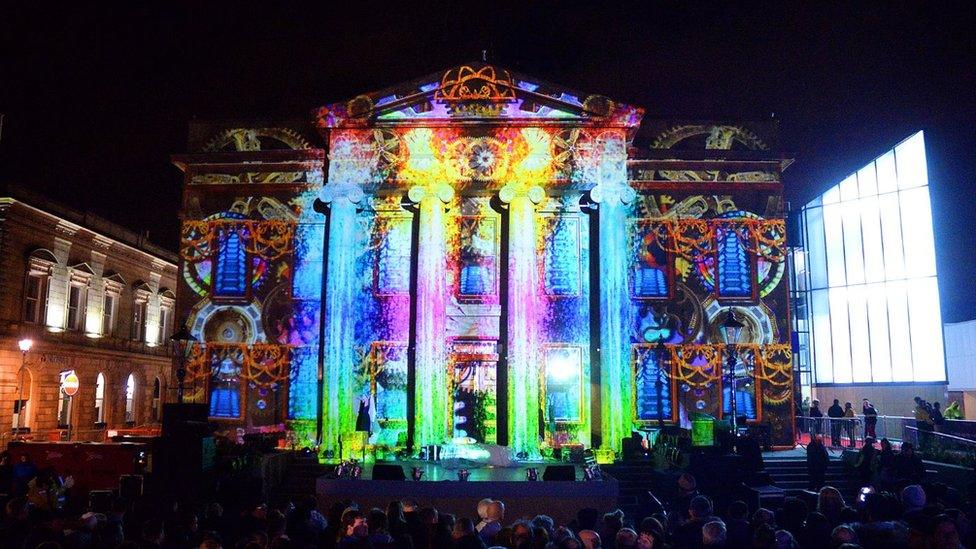
While some previously listed buildings crumbled further, others like Oldham Town Hall are thriving again
The Victorian Society has named the 10 sites and buildings most at risk of ruin for 2019. What happened to some of the Victorian and Edwardian architecture listed in previous years?
Crocker's Folly pub, north west London
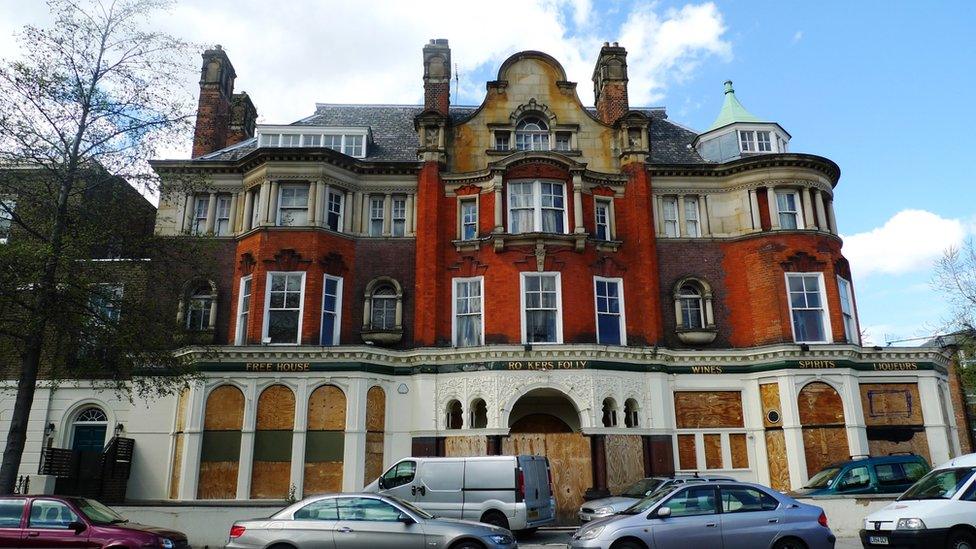
Crocker's Folly was listed by the society in 2007
The pub in St John's Wood appeared on the list in 2007, some 109 years after it was built by John Crocker.
Crocker spotted an opportunity to make some money from the planned St John's Wood rail terminus by building a hotel to capitalise on the forecast footfall.
He spared no expense building what was then known as the Crown Hotel, which included installing 50 kinds of marble and having a bar exclusively for women.
But the rail plans changed and the terminus was not built meaning the hotel was not as successful as Crocker had hoped.
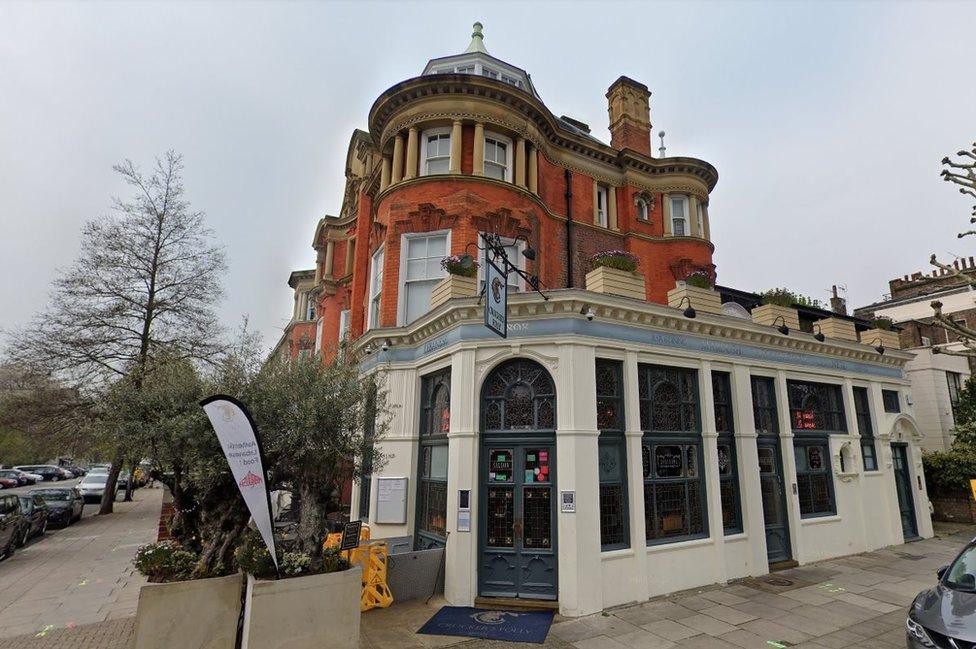
The pub has been renovated into a bar and restaurant
It was renamed Crocker's Folly in 1987 and by 2007 it was in a "dire state", the society said.
The pub has since been bought and renovated by the Maroush Group, who have kept all 50 types of marble, and become a specialist in Lebanese food and wine.
Oldway Mansion, Paignton

Oldway Mansion is modelled on the Palace of Versailles in France
The "Versailles of the West Country" was only on the list in 2018 but the Victorian Society is hopeful of its salvation.
It was built in 1873 for American inventor Isaac Singer but his son radically remodelled it in the style of the French Palace of Versailles in the early 20th Century.
The "opulent" interior includes an imperial staircase leading up to a ballroom on the east side and a gallery based on the hall of mirrors at Versailles on the west.
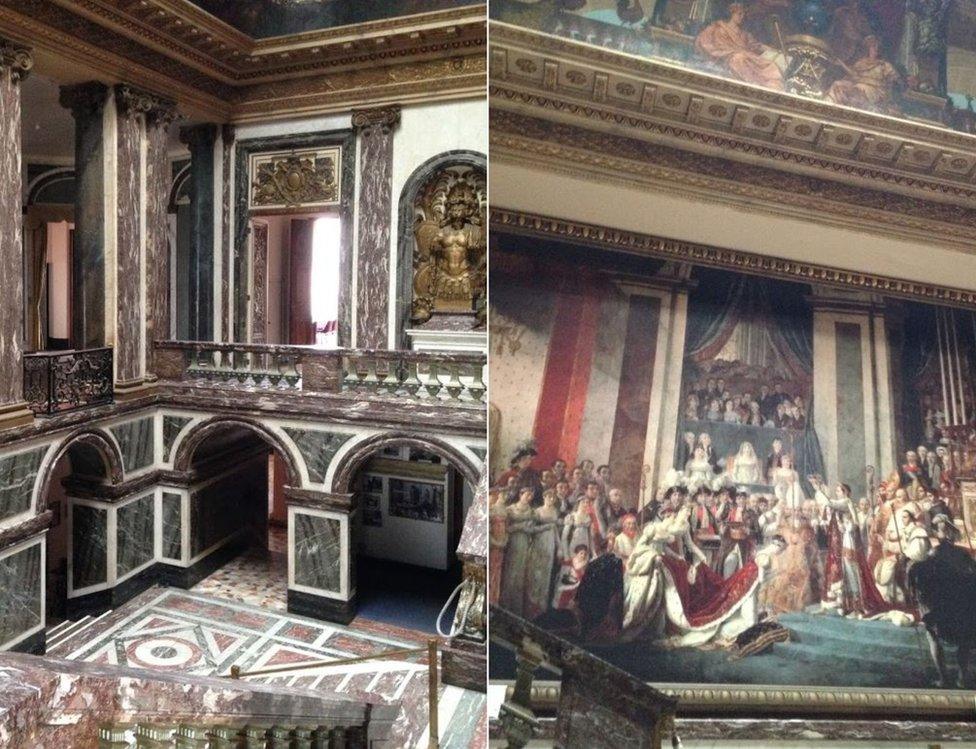
The interior is still "opulent" according to the society
It was used as council offices from 1946 until 2007 when Torbay Council announced its intention to sell the building.
The council said "significant steps" had been taken to secure the mansion's future, including the establishment of a trust and "memorandum of understanding" to raise funds for "conservation, repair and adaption".
An application for up to £25m from the Heritage Horizon Awards is expected to be made shortly, the council added.
The Winter Gardens, Great Yarmouth
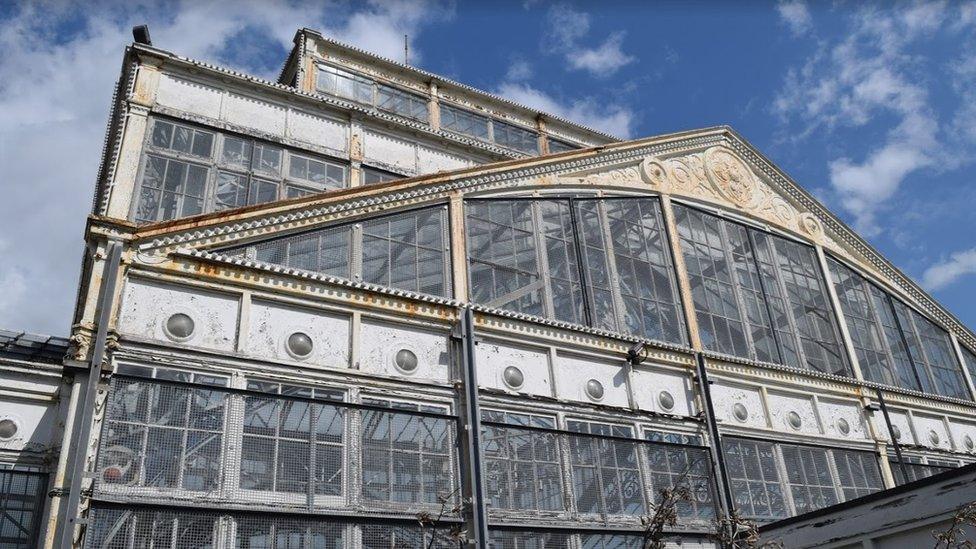
The Winter Gardens was built in Torquay and moved to Great Yarmouth by barge
Another 2018 entry, the Winter Gardens has been empty for years.
It was built between 1878-81 in Torquay before being relocated by barge to Great Yarmouth in 1904, reportedly without a single pane of glass breaking.
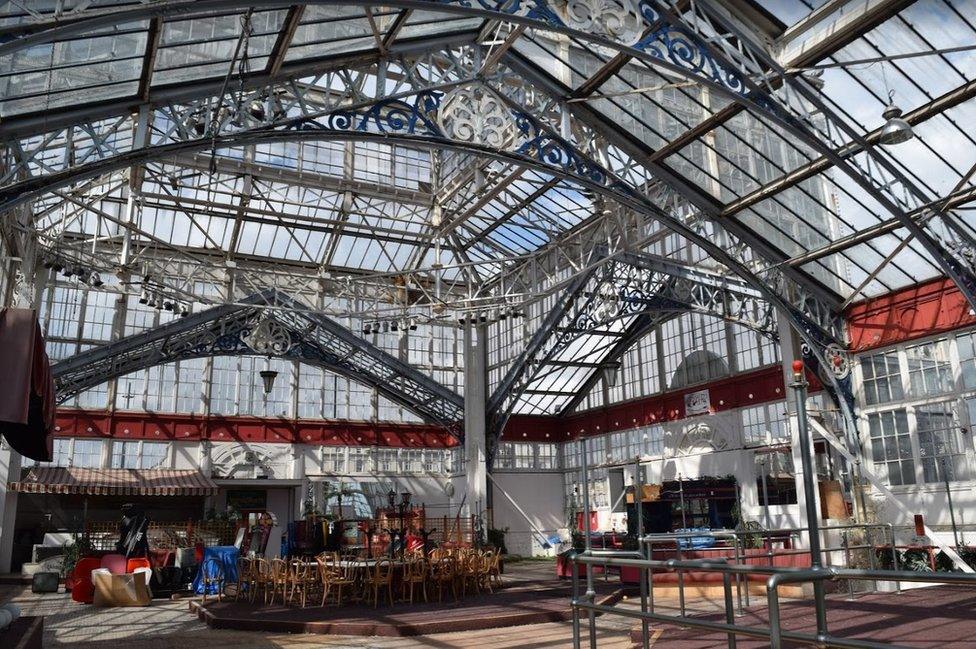
It was reported that not a single pane of glass was broken when it moved location
Uses over the years have included a ballroom, roller-skating rink and a German beer garden.
Council leader Carl Smith said the authority was seeking a "suitable operator with a sustainable business plan" to take it on and put together an application for National Lottery funding.
"We are currently considering opportunities which have come forward," he said.
Fisons' fertiliser factory, Bramford
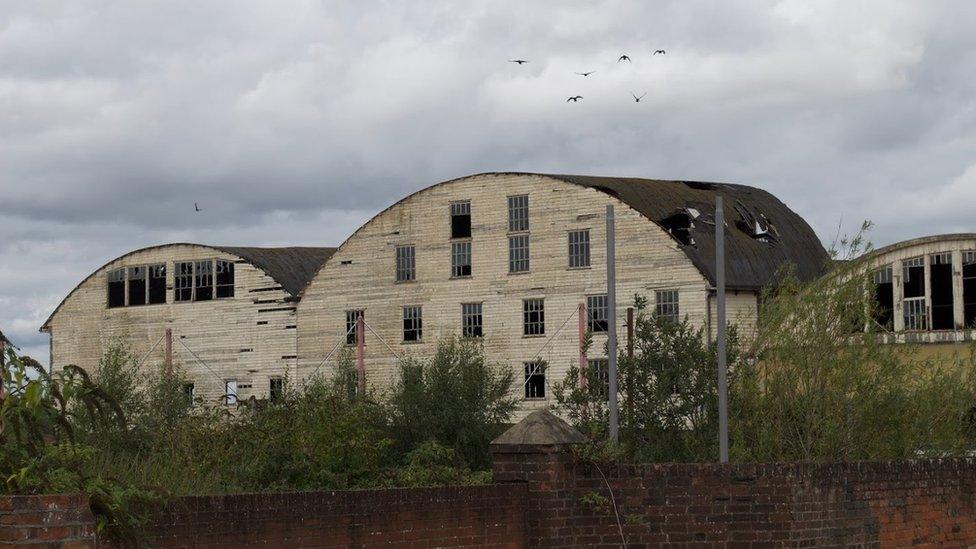
The factory near Ipswich closed in 2003
The factory in Suffolk was built in 1858 and until 2003 was used to produce fertiliser by the now-defunct Fisons.
The society listed it in 2017 after a series of arson attacks, but it was destroyed by a fire in May this year.
Society president Griff Rhys Jones said the "irreplaceable" piece of history should have been seen as "a magnificent opportunity", not a "white elephant".
"We cannot afford to lose our industrial heritage like this," he added.
The society said the loss of the factory highlighted the need to protect "derelict historic buildings from vandalism".
Plans were approved in 2014 to redevelop the site into a £20m housing and business park, but planning permission lapsed weeks before the final fire.
Oldham Town Hall, Oldham
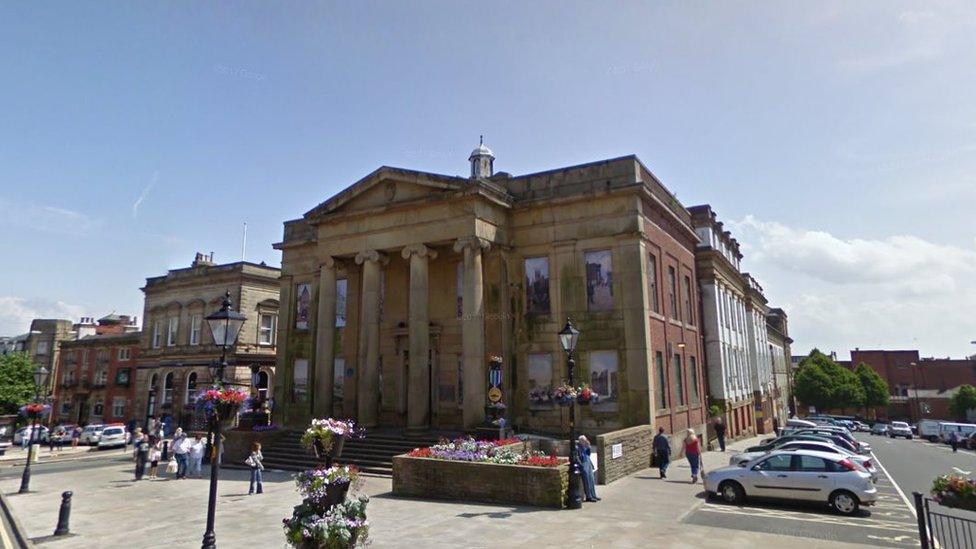
Oldham Town Hall was on the Victorian Society's most at risk list in 2009
The town hall was described as a "fantastic building" when it featured on the society's 2009 list but needed serious attention.
Ten years later and its fortunes have undergone a marked transformation.
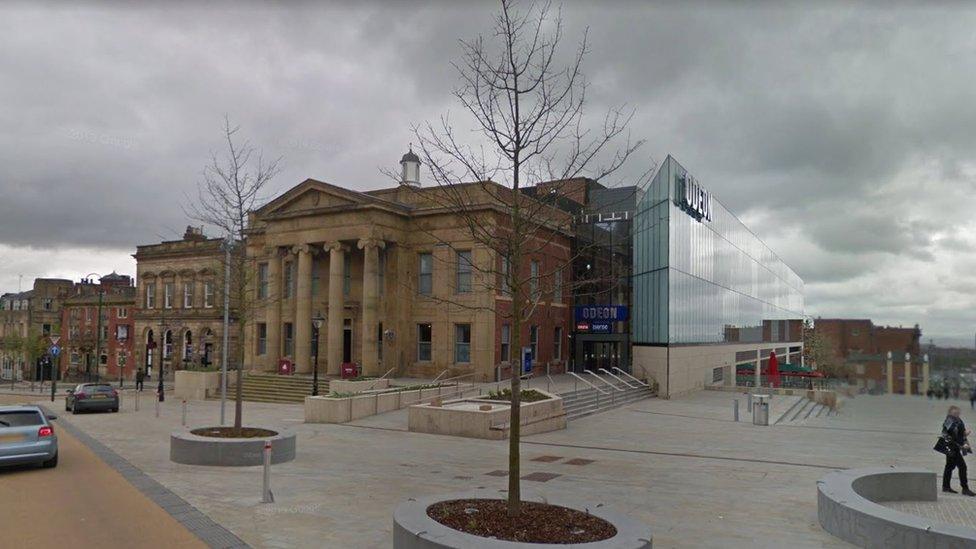
Oldham Town Hall now has a cinema and restaurants
The frontage has been repaired and a multi-screen cinema and restaurant complex added on to the back.
The society said the scheme had been "controversial" but "we supported it as it saved the building, and we see it as a great success".
Moseley School of Art, Birmingham
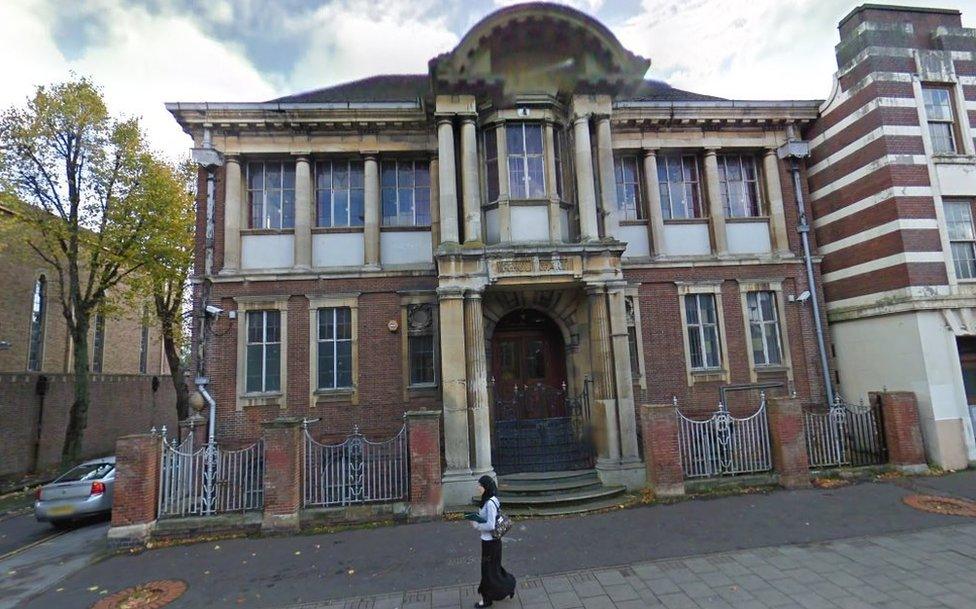
The school closed in 1975 and was bought by the Moseley Muslim Community Association
The school was built in 1899 and alumnae include musicians Roy Wood of Wizzard, Fleetwood Mac's Christine McVie and Ali Campbell of UB40.
It closed in 1975 and was bought by the Moseley Muslim Community Association (MMCA) nine years later and renamed the Moseley Community Centre.
In the 1990's it was used as a refugee integration centre for Afghans, Iranians, Iraqis and Bosnians, but the MMCA struggled to maintain the building.
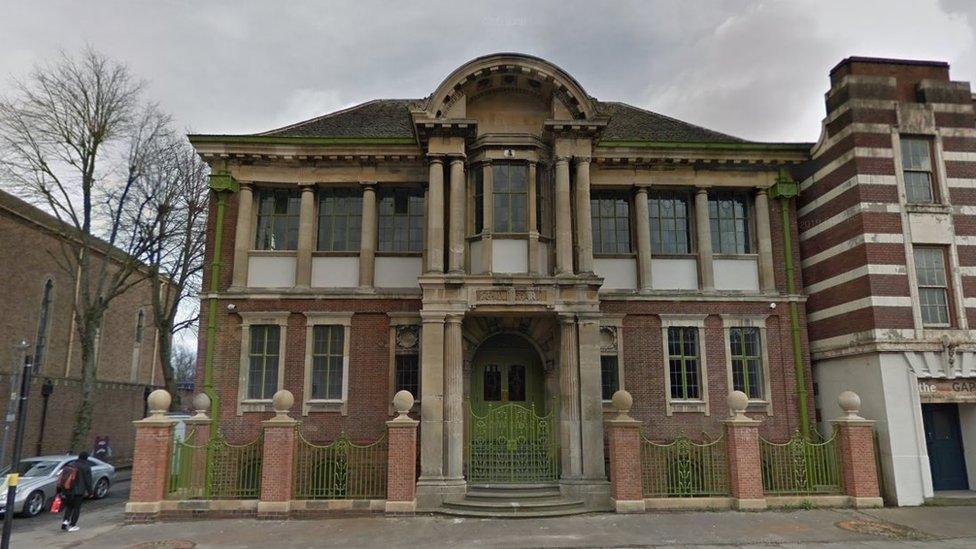
The community centre has undergone a £1.7m renovation
Listing it in 2010, the Victorian Society said the building was "crying out for investment and care" with its "steadily deteriorating condition" a cause of "great concern".
In 2017, the MMCA secured a £1.7m heritage lottery grant and the building has been renovated and refurbished.
Now it is a thriving community and arts centre once again, the MMCA said.
- Published13 September 2019
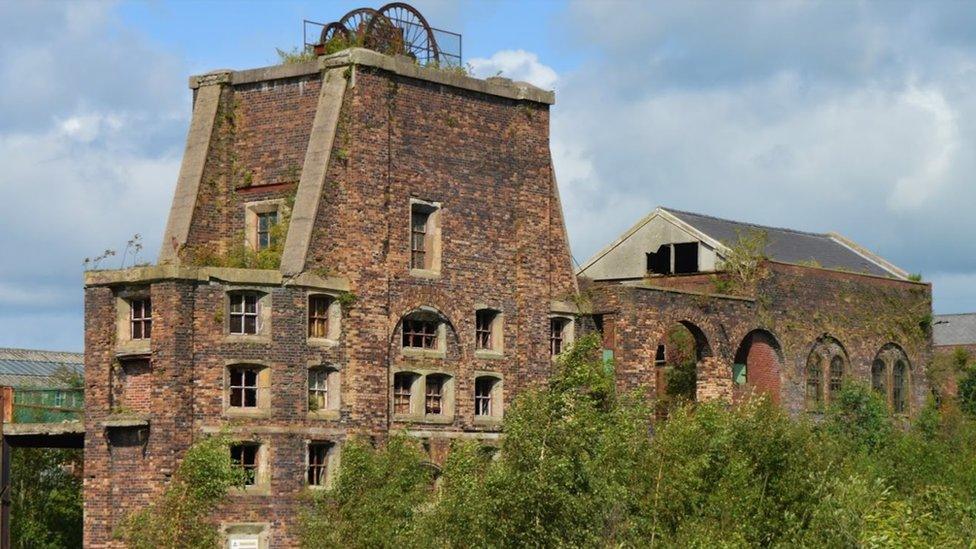
- Published21 August 2019
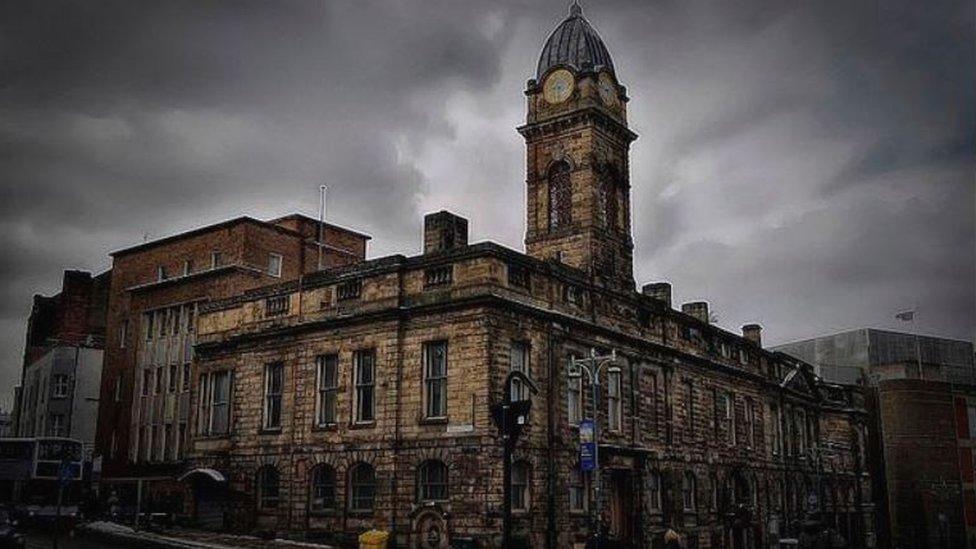
- Published8 November 2018
